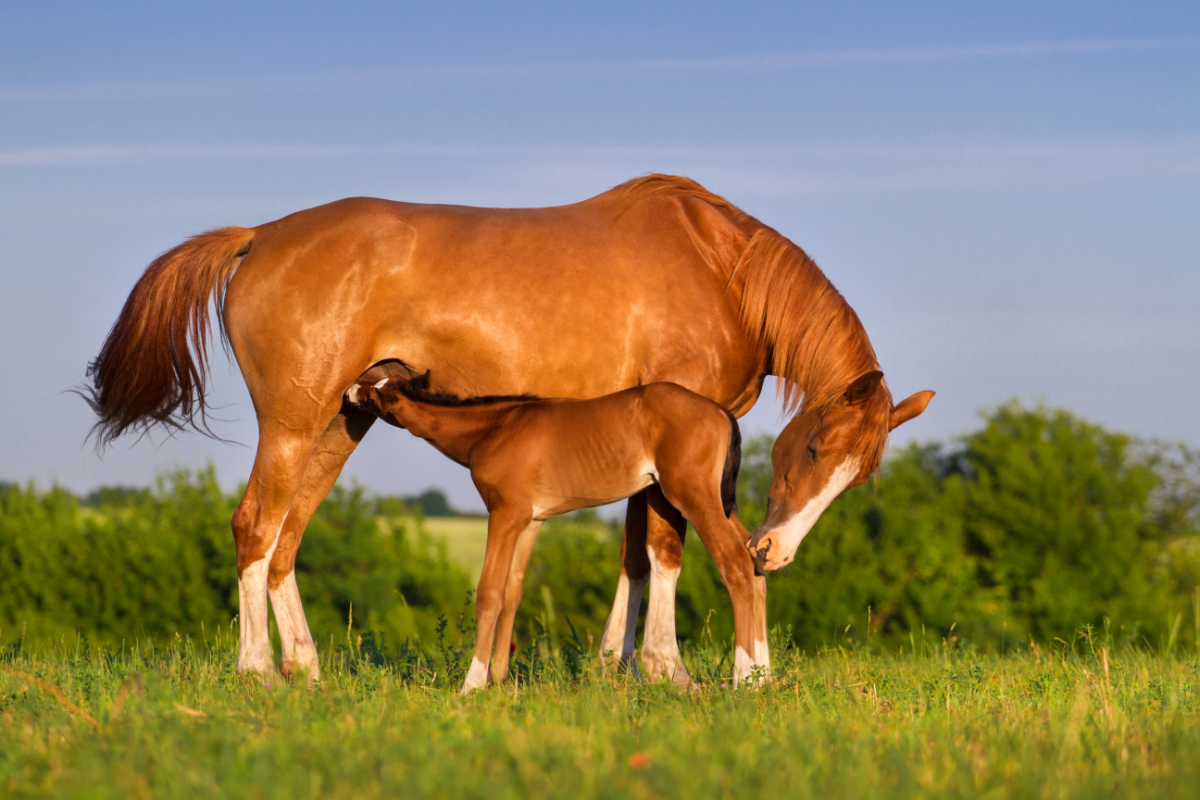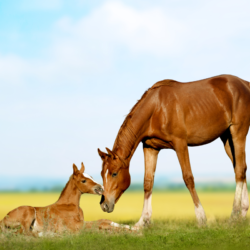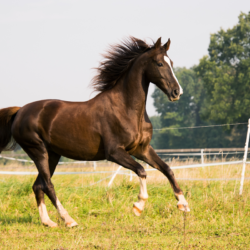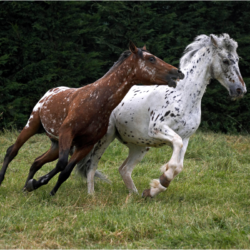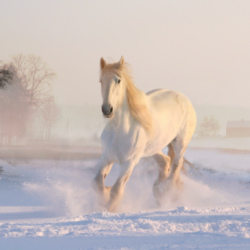Ovarian pain in mares is a common but often overlooked problem in equine veterinary medicine, especially in the fields of reproduction and sports performance. As well as producing oocytes, the ovaries regulate hormones that influence mares’ behaviour and physiology. Ovarian pain can indicate disorders such as cysts, tumours or hormonal imbalances, affecting health and performance.
The hormonal cycle in mares
A healthy mare has ovarian cycles of around 21 days. During these cycles, under the influence of hormones such as oestrogen and progesterone, the ovaries produce follicles that increase in size during the first 15 days. The dominant follicle, often 5 cm in diameter, then releases an egg into the uterus. After ovulation, the follicle transforms into a corpus luteum, and the ovary enters a resting phase for about 5 days before a new cycle begins.
This ovarian activity leads to hormonal and physical changes, which can cause discomfort and even pain for the mare. In particular, the large size of the follicles and ovulation can pull on the ovarian ligament, causing pain in the lower back, especially when exercising. These pains are compatible with a normal cycle and do not necessarily indicate an abnormality.
The photoperiod also influences the mare’s ovarian cycle. In winter, when light levels are low, ovarian activity decreases. However, exposure to prolonged artificial lighting can trigger heat even during this period. Light management is common in breeding and racing to encourage more regular and optimal reproductive cycles.
Ovarian pain can therefore be caused by natural physiological phenomena, such as the growth of follicles, but thorough examinations are necessary to rule out more serious causes such as tumours or cysts.
What are the symptoms of an “ovarian” mare?
Mares present cyclical symptoms linked to ovarian pain, generally at the start of heat and disappearing after ovulation. During this period, signs of discomfort appear, such as the mare arching her back, tail wagging, or biting of the flanks. Other signs include colic, back pain and posterior irregularity. Although bowel movements remain normal, appetite can become erratic. These symptoms can be relieved by antispasmodics, which suggests a link with ovarian pain without necessarily indicating a serious pathology.
Diagnosis is based on the cyclicity of the symptoms, their coincidence with heat, and the disappearance of symptoms after administration of hormones such as Regumate. As the follicles grow, they exert traction on the ovarian ligament, causing pain that is exacerbated by physical exertion. This tugging can lead to reactions such as bucking, refusing to move, kicking and sometimes rearing.
Although these manifestations can be intense, they are rarely frequent. However, for some mares, they can affect the relationship with their owner or lead to loss of performance. Studies on the influence of the oestrous cycle on sporting performance are limited, although some indicate reduced locomotor activity during oestrus. On the whole, mares’ behaviour seems to vary according to the cycle, but further research is needed to better understand these phenomena.
What causes ovarian pain?
Follicles, immature sex cells, progress towards ovulation by increasing in size and weight. This extra weight exerts a pull on the ovarian ligament, which attaches the ovaries to the abdominal wall, a very sensitive area. This tugging, accentuated by sporting activity, can cause ovarian pain and defensive reactions, such as rushing or reactivity to work. In addition to the pain associated with normal cycles, certain ovarian pathologies can aggravate these symptoms.
Granulosa tumours, a type of minimally invasive but locally aggressive cancer, can cause a significant increase in the size of the ovary, up to the size of a basketball, causing pain. These tumours affect the granulosa cells around the follicles. Affected mares often behave like stallions or display nymphomania. Diagnosis is made by ultrasound and hormone measurement, and treatment is surgical.
An ovarian haematoma can occur at ovulation, when the follicle ruptures, causing painful bleeding. This type of pain appears after ovulation, and treatment includes hormones to suppress heat or soothing remedies.
Ovarian abscesses, although rare, are very painful and can block ovarian activity. They cause symptoms such as colic, weight loss and signs of infection. Surgery is often necessary to prevent the abscess from rupturing into the abdomen.
Ovarian cysts, which are less common than we think, are fluid cavities associated with an absence of heat. Attempts can be made to reabsorb them hormonally, but surgery may be necessary if this fails. These cysts are not very painful but can increase ligament tension.

